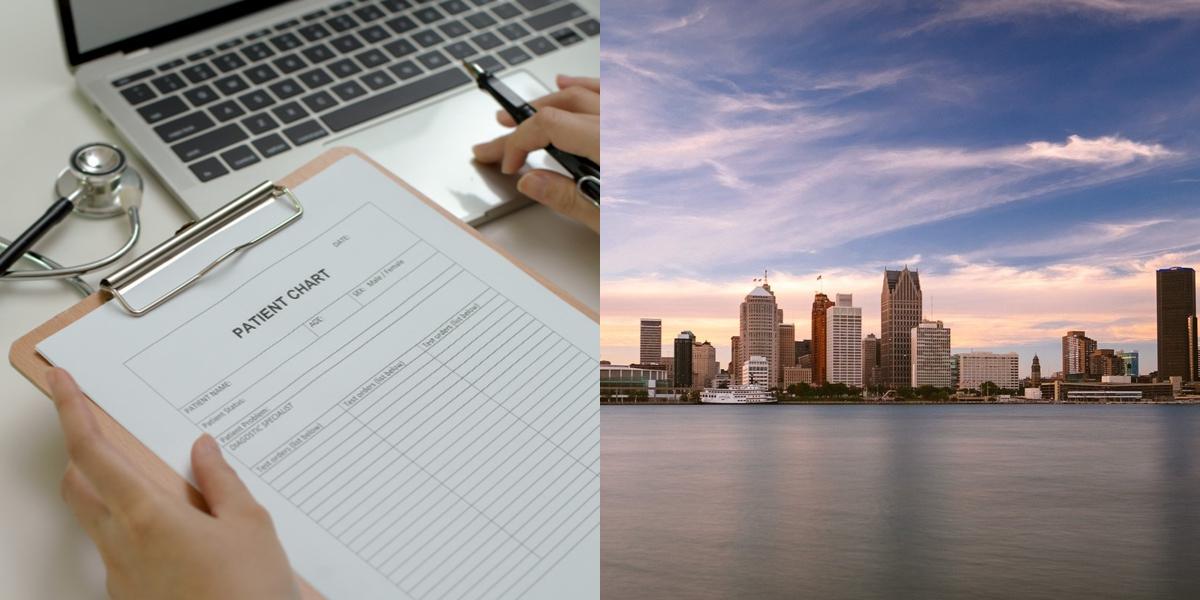How to Become a Medical Transcriptionist in Michigan

Medical transcriptionists play a crucial role in the healthcare industry by converting voice recordings of medical professionals into written reports. They ensure accurate and organized medical documentation, which is essential for patient care and legal purposes. If you are interested in becoming a medical transcriptionist in Michigan, here are the key points to consider:
How do I get a job as a Medical Transcriptionist?
Getting a job as a medical transcriptionist requires a combination of education, training, experience, and job search strategies. Here are some steps to help you land a job in this field:
-
Education and Training: Start by completing a medical transcription training program that provides you with the necessary knowledge and skills required for the job. Look for programs that are accredited and recognized by industry organizations such as AHDI. These programs should cover medical terminology, anatomy, physiology, pharmacology, transcription guidelines, and industry-specific software.
-
Gain Experience: While undergoing training, it is essential to gain practical experience in medical transcription. This can be done by transcribing dictations, working on medical reports, and familiarizing yourself with different medical specialties. Consider volunteering or interning at healthcare facilities or transcription companies to gain hands-on experience and build your portfolio.
-
Build a Professional Network: Networking is crucial in any job search. Join professional organizations such as AHDI and attend industry conferences or events to connect with professionals in the field. Networking can help you learn about job opportunities, gain insights into the industry, and get recommendations or referrals.
-
Create a Strong Resume: Craft a compelling resume that highlights your education, training, experience, and skills relevant to medical transcription. Include any certifications, continuing education, or specialized training you have completed. Tailor your resume to each job application by emphasizing the skills and qualifications that match the specific requirements of the position.
-
Utilize Online Job Boards: Use online job boards and career websites to search for medical transcriptionist job openings. Websites like Indeed, Glassdoor, and LinkedIn often feature job listings in the healthcare and transcription fields. Customize your search criteria to find opportunities in your desired location or remote positions.
-
Prepare for Interviews: Once you start receiving interview invitations, take the time to prepare for them. Research the company, understand their requirements and expectations, and practice answering common interview questions. Be prepared to showcase your transcription skills, attention to detail, and ability to work under pressure.
-
Continuing Education and Professional Development: To stand out in the job market and advance in your career, it is important to continue learning and growing as a medical transcriptionist. Stay updated with the latest industry trends, technologies, and transcription guidelines. Consider pursuing advanced certifications or specialized training in areas such as speech recognition editing or electronic health records (EHR) management.
By following these steps and being proactive in your job search, you can increase your chances of securing a job as a medical transcriptionist.
Career Paths and Opportunities after Becoming a Medical Transcriptionist
Becoming a certified medical transcriptionist opens up a range of career paths and opportunities within the healthcare documentation industry. Here are some potential career paths you can pursue:
-
Medical Transcriptionist: As a medical transcriptionist, you can work in various healthcare settings, including hospitals, clinics, doctor's offices, and transcription companies. Your role will involve transcribing and editing medical dictations, creating accurate and timely medical reports, and ensuring compliance with industry guidelines and standards.
-
Editor/Quality Assurance Specialist: With experience and expertise in medical transcription, you can transition into an editing or quality assurance role. In this position, you will review and edit transcribed documents for accuracy, grammar, and formatting. You will also ensure that documents meet quality standards and adhere to specific client requirements.
-
Medical Language Specialist: As a medical language specialist, you will specialize in specific medical specialties or subspecialties. You will become an expert in the terminology, procedures, and documentation requirements of these specialties. This role may involve collaborating with healthcare professionals, providing consultation on documentation, and ensuring accurate and comprehensive medical reports.
-
Speech Recognition Editor: With advancements in technology, many healthcare facilities are transitioning to speech recognition software for medical documentation. As a speech recognition editor, you will edit and review transcribed documents generated by speech recognition software. Your role will involve correcting errors, improving accuracy, and ensuring the final document meets quality standards.
-
Medical Coding and Billing: Medical transcriptionists with additional training and certification in medical coding and billing can pursue opportunities in this field. As a medical coder, you will assign appropriate codes to medical procedures, diagnoses, and treatments for billing and reimbursement purposes. This role requires knowledge of coding systems such as ICD-10, CPT, and HCPCS.
-
Healthcare Documentation Specialist: With experience and advanced certifications, you can become a healthcare documentation specialist. In this role, you will oversee the entire medical transcription process, ensuring accuracy, efficiency, and compliance with industry standards. You may also train and mentor new transcriptionists, develop documentation guidelines, and implement quality improvement initiatives.
These are just a few examples of the career paths and opportunities available to certified medical transcriptionists. The healthcare documentation industry continues to evolve, providing various avenues for growth and specialization.
Final Thoughts
Becoming a certified medical transcriptionist not only offers a rewarding and flexible career but also plays a vital role in the healthcare industry. With the right education, training, and certification, you can position yourself as a qualified professional in this field.
Remember to stay updated with the latest industry trends, technologies, and transcription guidelines. Continuously improving your skills and knowledge will not only enhance your job prospects but also contribute to your professional growth and success.
Whether you choose to work in a healthcare facility, transcription company, or as a freelancer, the demand for medical transcriptionists remains strong. Embrace the opportunities available in this field and embark on a fulfilling career as a medical transcriptionist.
Looking for a better fit? These other articles could be more in line with your expectations if this one isn't precisely what you had in mind:

Joanna Paragas is part of the Growth team at Dreambound. Her primary role involves creating various automation to streamline workflows and make tasks more efficient for the entire team. Beyond her professional endeavors, Joanna enjoys spending her free time playing with her dogs and enhancing her knowledge by enrolling in online courses.




